Launceston, Cornwall
Up to 1834
A parliamentary report of 1777 recorded a parish workhouse in operation at Launceston with accommodation for up to 40 inmates.
A building on Dockacre Road in Launceston, originally built as a prison, later served as a workhouse and almshouses.
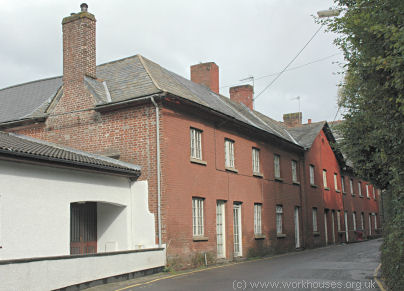
Launceston former workhouse, 2005.
© Peter Higginbotham.
In June 1804, Quaker and prison reformer James Neild visited Launceston workhouse where:
After 1834
Launceston Poor Law Union was formed on 2nd February 1837. Its operation was overseen by an elected Board of Guardians, 39 in number, representing its 21 constituent parishes as listed below (figures in brackets indicate numbers of Guardians if more than one):
Cornwall:
St Mary Magdalen (4), St Stephen's with the Borough of Newport (2), St Thomas the Apostle, St Thomas Street, Alternon [Altarnun] (3), Boynton, Egloskerry (2), Lawhitton, Lewannick (2), Lezant (2), Laneast, North Hill (3), Stoke Climsland (4), South Petherwin (2), Tregmeer, Tremaine, Trenegloss, Trewen, Warbstow.
Devon:
North Petherwin (2), Warrington (2).
The population falling within the Union at the 1831 census had been 14,841 — with its parishes ranging in size from Tremaine (population 118) to St Mary Magdalen (2,231). The average annual poor-rate expenditure for the period 1834-36 had been £6,297 or 8s.6d. per head of the population.
The Launceston Union workhouse was built in 1838 on a three acre site at the junction of Hurdon Road and Tavistock Road at Page's Cross, near Launceston. It was designed by Charles Lang who was also the architect of the St Germans Union workhouse. The Poor Law Commissioners authorised the sum of £4,350 on construction of the building which was intended to accommodate 150 inmates. The workhouse location and layout are shown on the 1932 map below by which time the workhouse was shown as Launceston Poor Law Institution:
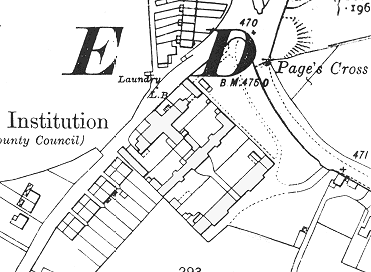
Launceston site, 1932.
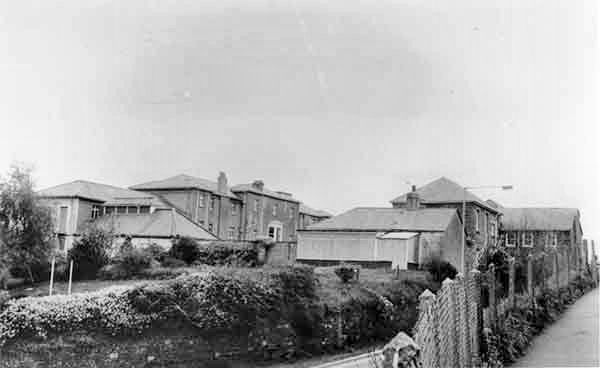
Launceston workhouse main building and infirmary from the north-east, date unknown.
The entrance range at the south contained the board-room, probationary wards and a chapel. The main block was located at the centre of the site, with females placed at the east side and males at the west. Adults were housef on the north side of the building, while children were at the south side, facing towards the entrance block. An infirmary block lay at the north of the main building, backing on to Hurdon Road.
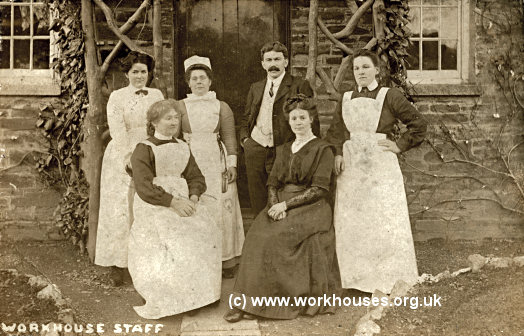
Launceston workhouse staff, c.1909.
© Peter Higginbotham.
Aftre 1930, the workhouse became a Public Assistance Institution. It then became known as Page's Cross Hospital, later renamed St Mary's Hospital.
All the former workhouse buildings have been demolished and the site is now occupied by a supermarket.
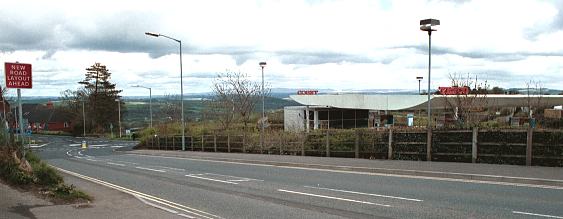
Launceston former workhouse site from the west, 2001.
© Peter Higginbotham.
Records
Note: many repositories impose a closure period of up to 100 years for records identifying individuals. Before travelling a long distance, always check that the records you want to consult will be available.
- Cornwall Archives, Kresen Kernow, Little Vauxhall, Redruth TR15 1AS. Few records survive — holdings include Guardians' minute books (1890-94, 1908-30); Inmate lists (1840-44); Ledgers (1890-1927); Relief order book (1930).
- [an error occurred while processing this directive]
Links
- None.
Unless otherwise indicated, this page () is copyright Peter Higginbotham. Contents may not be reproduced without permission.


